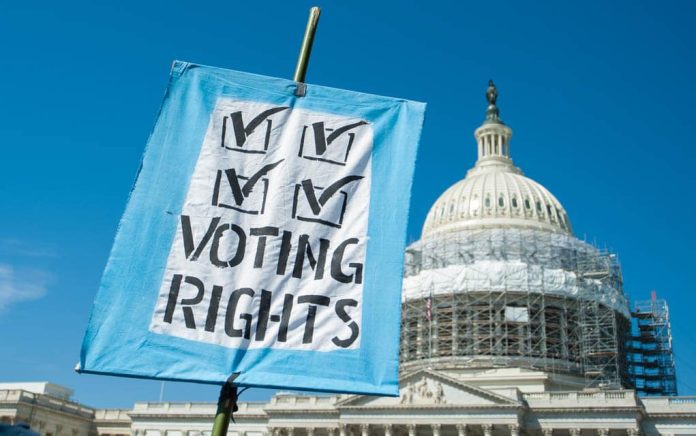
(RepublicanReport.com) – Today, anyone over the age of 18 who has registered to vote is able to do so. In some cases, they may need to provide identification, but there are no restrictions based on their demographics. This is a far cry from the original guidelines when it came to voting in America, and some of those are still evolving.
Freemen With Property
Originally, the right for citizens to vote in any election was based on their religion, race, gender, and holdings. Only free white men who were Christian, at least 21, and owned property were allowed to vote. These men were known as “freemen.” At the time, women weren’t allowed to own property, so by these standards, they could not vote. Others were not white or weren’t free.
Race and Property
The 19th century saw several changes to the laws regarding voting. Some of these changes came with the Revolutionary War. States gained the ability to make their own laws concerning voting and by 1776, at least one state (New Jersey) gave women the right to vote as long as they met residency and property requirements. Between 1776 and 1856, states began dropping property requirements so that by the end of this period, all white men could vote.
Citizenship and Gender
The 14th Amendment was an enormous step for voting rights, as citizenship was a requirement. Even though some segments of the population still weren’t considered citizens, African Americans now were. In 1870, it was the 15th Amendment that eliminated bias based on not just race, but previous terms of slavery or indentureship.
With the 20th century came a long list of new voting rights. The 19th Amendment gave women the right to vote and just 4 years later, the Indian Citizenship Act gave Native Americans the citizenship they needed in order to vote. In 1952, the Immigration and Nationality Act addressed citizenship and investment rights of Asian Americans, giving them the right to vote.
Location, Education, and Age
The 23rd Amendment gave residents of the District of Columbia, not a state, but a territory of the US, the right to vote for president, though not Congress. That amendment was passed in 1961 and would seem to have completed the list of major concerns when it came to voters. But, opponents of some of those rights were finding ways to prevent voters from casting their ballots. One of the ways they did this was with literacy tests.
Quality education was not easily accessible to many socioeconomic groups. Many young people simply quit school in order to help out at home, whether it be physically or financially. But, their lack of literacy didn’t mean they shouldn’t have a say in who their leaders were. It wasn’t just the tests, either.
Many were beaten on their way to the polls, asked to perform extreme tasks, or otherwise prevented from getting to the polls. The Voting Rights Act of 1965 eliminated literacy tests and put oversight in place to prevent harassment. Today, it has been amended to include assistance for those who speak English as a second language and other issues. The 24th Amendment put an end to the poll taxes that prevented the low-income population from voting.
Age seems to be one of the last barriers in the voting process. The change started with the arguments based on drafts for men 18 and older. They felt that if they could go to war for their country, surely they could have a say in who led it. They won that fight after several years and proposals.
It wasn’t until 1971 that the 26th Amendment changed the voting age from 21 to 18. In 2020, that age may change yet again with the For the People Act, which seeks to, among other things, reduce the voting age to 16.
Copyright 2020, RepublicanReport.com










